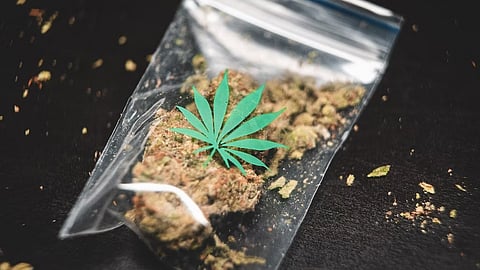

As legislation in multiple states eases former restrictions around medical and recreational cannabis in the United States, an increasing proportion of the population reports use of the drug. Between 2016 and 2018, more than 22 percent of Massachusetts residents reported any prior cannabis use for medical or recreational reasons. However, little is known about cannabis use in patients who undergo surgery or interventional procedures, where cannabis use has important additional clinical implications.
In a new study published in The Lancet’s eClinical Medicine, researchers led by anesthesiologists at Beth Israel Deaconess Medical Center (BIDMC) analyzed de-identified data from patients who underwent non-cardiac surgery in Boston between 2008 and 2020. The scientists found that cannabis users had a higher complexity of co-existing conditions overall, including mood disorders such as depression and substance use disorders. Patients with a diagnosed cannabis use disorder more often required advanced postprocedural healthcare – such as admission to an intensive care unit – compared to non-users. However, patients whose use of cannabis was not classified as a disorder had lower odds of requiring advanced healthcare after surgery compared to patients who never use cannabis.
“Our analysis revealed that cannabis use is very common and has substantially increased among patients undergoing surgery, reflecting trends in the general population; however, differential effects on postprocedural health care utilization were observed between patients with moderate non-medical cannabis use and patients with a cannabis use disorder,” said corresponding author Maximillian S. Schaefer, Director of the Center for Anesthesia Research Excellence at BIDMC. “We hope our data helps make clinicians aware of how different patterns of cannabis use might represent different patient populations, which in turn translates into distinct perioperative risk profiles.”
In this hospital registry study, Schaefer and colleagues analyzed de-identified data from 210,639 adult patients undergoing noncardiac surgery at BIDMC between January 2008 and June 2020. Non-medical cannabis use was identified before procedures during routine, structured interviews about past and ongoing habits of drug use, in accordance with the American Society of PeriAnesthesia Nursing recommendations. Patients with cannabis use disorder were identified through diagnostic codes.
Over the entire study period, the researchers found that more than 16,000 patients, or 7.7 percent, used cannabis prior to surgery, of which 14,045 (87 percent) were identified as non-medical users and 2,166 (13 percent) had a diagnosis of cannabis use disorder. Of all the patients undergoing surgery, a total of 24,516 patients, or 12 percent, required advanced post-procedural healthcare utilization, among which 1,465 patients self-identified as non-medical cannabis users, 418 patients presented with cannabis use disorder and 22,633 patients had no reported ongoing cannabis use.
Overall, patients who self-identified as cannabis users were on average younger, more often male, and more likely to suffer from depression, anxiety and schizoaffective disorders. Substance use disorders related to alcohol, cocaine, IV drugs, prescription medications and psychedelic drugs were more frequent in patients who used cannabis.
“As these comorbidities have been associated with increased complications including arrhythmias and sudden cardiac death after anesthesia, a history of cannabis use disorder might serve as an indicator of potentially complicating factor for patients undergoing anesthesia that in turn contribute to the requirement of higher-level healthcare utilization after surgery,” Schaefer said.
Compared to patients who did not use cannabis, patients with a diagnosis of cannabis use disorder had higher odds of requiring advanced post procedural healthcare utilization. Specifically, a diagnosis of cannabis use disorder was linked with higher odds of a 30-day hospital readmission, compared to patients who did not use cannabis.
By contrast, patients with reported ongoing non-medical cannabis use had lower odds of advanced post-procedural healthcare unit utilization compared to patients who did not use cannabis. Moreover, such use was linked to shorter hospital length of stay than patients who did not use cannabis. Over the course of the study period, the scientists saw the prevalence of cannabis use rise from 5 percent in 2008 to 14 percent by 2020 and observed higher rates of cannabis use among those undergoing surgery than previous studies reported. While the scientists acknowledge the discrepancy could be the result of regional consumption patterns, they suggest their inclusion of ongoing self-reported non-medical cannabis users based on structured pre-admission interviews paints a more accurate picture than findings that identified patients’ cannabis use on diagnostic codes alone.
“This cohort represents a distinctively different patient population of more general non-medical users,” said Schaefer. “These differential findings in patients who self-identified as ongoing, non-medical cannabis users without a diagnosis of disorder strongly suggest that future studies need to differentiate these two patient populations. Findings based on the identification of cannabis use from diagnostic codes alone might not be applicable to most mainstream cannabis users.” (MSM/Newswise)
